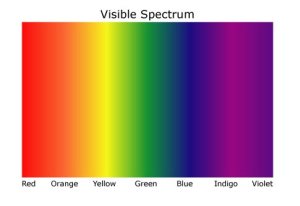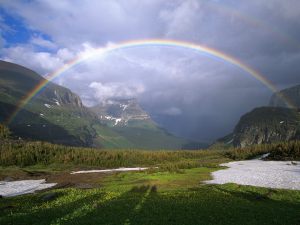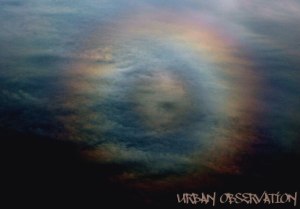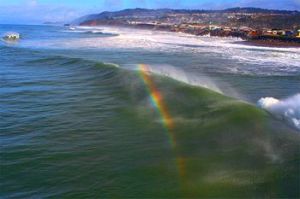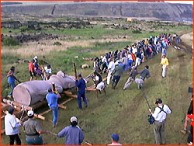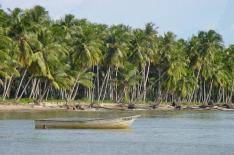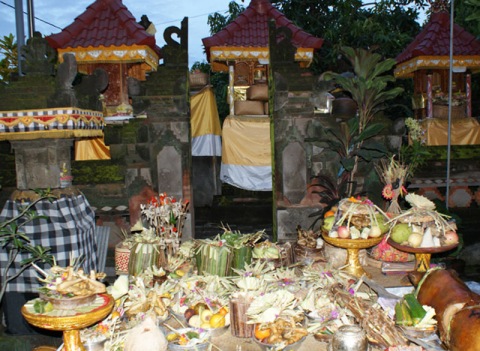Does people of your country still ride double-decker buses? In my country, Indonesia, I never witness this transportation anymore. It went extinct as financial crisis hit our country years ago, and as its popularity decreased. I used to ride it in abroad when I was still a child. I think most children will love to sit on the second floor of these buses… so did I. It’s such a wonderful feeling to watch the street from a higher place, to watch far-away views.
I miss them all so I tried to look more information about the history, kind of hoping that I would find news that the bus is still operating somewhere in Indonesia =p
1. The Definition
A double-decker is a bus with two decks. The traditional bus was colored in bright red, though nowadays, they are varied in colors and styles.
It was discovered in London and has been struggling to survive for centuries in a competition against other faster and more effective transportation such as ordinary buses, trains, and taxis. Now, double-decker buses are still found in certain areas in London, U.S. as well as former British colonies and protectorates such as Hong Kong, Singapore, and Japan.
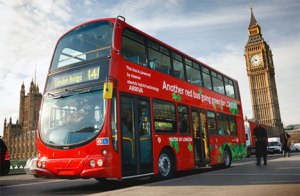
A modern double decker
2. Strengths and Weaknesses
As well as things in general, a double-decker bus has also its own strengths and weaknesses. The weaknesses they have are one of the reasons why it is difficult for them to survive in modern era.
Strengths:
- Efficient use of road space
- It can carry a lot more passengers
- Many tourists like to ride it in order to tour around a city or town, seeing more views from a higher area on its second level
Weaknesses:
- It’s unstable. Due to its excessive height, double deckers are not able to fit under overpasses and through narrow areas that other vehicles can.
- It can travel only on flat streets.
- Disabled people, especially the ones using wheel chairs, are not able to climb the stair to the second level.
- It walks slower than motorized transportations in general because of its height and weight.

Stair in a double decker, which is difficult to get passed by disabled people.
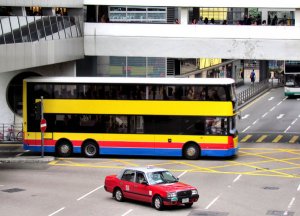
A double decker under an overpass. Some accidents involved double decker buses noted that the buses failed to pass the overpasses as they hit the roof of the overpasses

The upper deck of a modern double decker bus is used by tourists to enjoy views of cities or towns they visit.
3. The History
The first attempt to create a bus was conducted in France back in 1662, but it was fail. In 1829, the first commercial bus, called omnibus, was finally introduced in London. It was still horse-drawn since modern motors haven’t been found at the time. The first omnibuses were freed of charges, but soon enough, the passengers were charged to cover the maintenance costs, especially to feed the horses.
Some companies was soon interested to have a business on the public transportation. The London General Omnibus Co. (LGOC) was one of them and was the largest one. The LGOC then became the king of omnibuses business in London. It was the first omnibuses company to operate on timetables for commuters.
The first double-decker omnibus was introduced in 1847 in the U.K. by Adams & Co of Fairfield. It was also still drawn by horses (usually three horses). At first, the second level of the bus didn’t have a roof. The sits on the top deck were designed lengthwise. The lower deck was covered with clerestory type of roof. The passengers sat at the lower deck was charged with more expenses, twice higher than the ones at the upper deck. The upper deck didn’t get popular in an instant. It was continuously advertised on the sides of the bus. Ten years later the upper deck finally got more fans.

The first double decker omnibus by LGOC
In 1852, a bigger double decker which can load up to 42 passengers was operated. It still used 3 horses to draw. The passengers can reach the second floor using stairs. A year later, the public transportation has started to be known outside the U.K, which is in France. As well as its northern neigbor, France released a horse-drawn omnibus. The second floor of the bus was also cheaper than the first floor, and sometimes it was freed of charges. However, in 1911, the omnibus was drawn following an overturned double-decker bus incident at place de l’Etoile. It’s not until 1966 that they tried to run the bus again.

Left, double-decker bus Schneider Brillié P2; Center, double decker horse-drawn omnibus
Back to the birthplace of bus, London…
After LGOC operated the first motorized bus in 1908, fifteen years later, A.E.C. (Associated Equipment Company) released the first motorized double-decker bus which featured a full covered top deck, and called them NS-type. At the time, the full covered double-decker bus was considered rare and luxurious. The seats on the upper deck, which was previously made of wood, was finally replaced with more comfortable ones (close to what we use today), which featured padding, springs, webbing, and covers. Having more comfortable facilities to offer, the newly designed double-decker bus was finally able to gain more fans and compete with trams, which were also popular at the time. When new towns, which weren’t able to be reached easily using trams and trains, were growing rapidly, the NS-type double deckers’ popularity was rising. As motorized bus was continuously developing, the horse-carried omnibuses were no longer people’s favorite transportation. During World War I, on August 4, 1914, they stopped their operations. Yet, it was still wandering in the U.K.’s villages until 1932. Seemingly, the NS-type double deckers also couldn’t stay for a long time in top position. In 1937, it met its end as well.

the NS-type double decker bus, the first motorized one
Although, the NS-type has stopped operating, other double deckers were still operating. In 1941, a woman, Miss Phyllis Thompson, was entrusted to have a license to drive the huge vehicle for the first time. Later in 1949, another design of double decker, The Bristol Lodekka, was launched by Bristol Commercial Vehicles. It has a traditional half-cab design, but with a lower floor level and a lower overall height, decreasing the weight of the bus and making it easier to drive. The bus was able to go through undercovered bridges in the U.K. The bus was operating up until 1968.

The Bristol Lodekka double decker omnibus
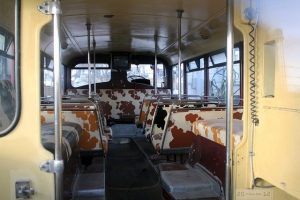
Inside The Bristol Lodekka double decker omnibus
14 years before it stopped operating, Routemaster Bus London was introduced. It was commercialized in 1956. It offered modern facilities, which most bus and some other motorized vehicles still didn’t have at the time, such as a front suspension, a power steering, an automatic transmission, and a hydrolic brake. The design gained more popularity in instant since it’s considered modern, more efficient than its competitors. London people recognized them with the double decker’s original color, bright red. Later, it became the icon of the U.K., and was one of the most favorite transportation to enjoy London’s view. Years later, the bus was widely-known around the world, and the design was used by many countries to create their own double deckers. So far, Routemaster bus has the longest operation term of all double deckers. Nevertheless, all the beginnings will meet their ends. That’s also what happened with Routemaster. The last Routemaster bus was officially pulled off on December 8, 2005. In recent time before it was off, the bus was functioned more for tourism and special events such as weddings.

A routemaster double decker bus
The retired Routemaster buses have been changed into mobile holiday homes, campers, mobile theatres, catwalk fashion shows, as well as catering buses for film crews. Some others have been converted to cafes. The buses still attract tourists’ attention. One of them are even modified to be a triple-decker bus called the Knight Bus in “Harry Potter and the Prisoner of Azkaban” movie. Unfortunately, many of them were also destroyed at demolition derbys or in “banger races”.

Routemaster bus cafe Shoreditch London

A retired routemaster double decker is used for a hospitality business

A retired routemaster double decker was modified to become a bus with three decks for one of Harry Potter’s movie sequels, “Harry Potter and the Prisoner of Azkaban”
However,on February 20, 2012, a newly developed double-decker bus produced by jointly Aston Martin and architects Foster + Partners was launched in London. The launching was in time for the 2012 Summer Olympics in the U.K. The first batch of production buses will enter into service in Spring 2013. The modern design of the bus still has retro touches inspired by the iconic London Routemaster. It is fully handicap accessible and uses the latest green technology such as solar panels. It is 15% more efficient in fuel rather than existing hybrid buses. Moreover, it is 40% more efficient than conventional diesel double deckers.

A new double decker bus designed by Aston Martin and architects Foster + Partners
4. In Indonesia
Double deckers used to be found in several big cities in Indonesia such as Jakarta, Bandung, Surabaya, Makassar, and Solo. I couldn’t find any information about when the trend of double deckers entered my country for the first time, but it was introduced in Solo back in 1983, thanks to Mrs. Tien Soeharto, the first lady of the second president of Indonesia, President Soeharto. One of Soeharto’s missions at the time was to develop Solo to become one of the most modern cities in Indonesia. Four years later, Solo had 30 double decker buses.
At the time, double deckers were one of the most important transportation in those big cities in Indonesia since the people didn’t have as many choices of public transportation as they have today. However, in 1998, there came the biggest economic crisis in Indonesia and chaotic political condition. The crisis gave a negative impact for the development of the huge bus. In short time, double deckers companies in Indonesia sold some of their units to reduce their loss. The companies couldn’t cover the cost for the maintenance. In Solo, the double-decker bus was reduced to 6 units only.

One of double deckers which ever operated in Jakarta, Indonesia
Nowadays, double-decker can only be found in Solo. A unit called “Werkudara” started operating on February 20, 2011. According to some reports, the number of passengers for this type of bus was not so many, and they are tourists who want to enjoy the view of Solo. However, as other double deckers, the bus have problems to transport tourists to some locations because of its height and body-shape. In order to solve the problem, Surakarta’s Head of the Transportation Department, Yosca Soedrajat Herman said in 2011, “For sure, double-decker bus will bring tourists to places as he wishes. However, when such limitations occur at that location, the bus must be parked outside.”
Some people complained about how slowness of the bus, but some others enjoy the slowness. A university student, Dian, admitted that sitting upstairs was relaxing. Others said that they liked to hear the rustle of leaves more clearly from the upper deck. In addition, children often asked their parents to grant their permissions to sit upstairs. Anton, a high school student in Solo, revealed that he liked to take a sit on the second floor of the double decker to refresh his mind while enjoying the views. Some people do still love the huge bus, and some of them, just like me, miss the sensation of sitting upstairs.

“Werkudara”, the only remaining double decker in Indonesia, can be found in Solo and is used to transport tourists.
Though it’s just one unit in Solo, I’m still happy to hear the news. I think it’s important for us to preserve this kind of transportation. It is indeed slower than general buses, but it can carry a lot more passengers and can help us to enjoy views from a higher place while touring a whole city or town. I still wish that someday I can ride it again… it was a wonderful childhood memory 🙂


















